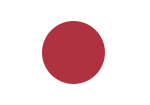Tokyo Station

Tokyo Station (Japanese: 東京駅, Japanese pronunciation: [to̞ːkʲo̞ːe̞kʲi]) is a railway station in Chiyoda, Tokyo, Japan. The original station is located in Chiyoda's Marunouchi business district near the Imperial Palace grounds. The newer Eastern extension is not far from the Ginza commercial district. Due to the large area covered by the station, it is divided into the Marunouchi (west) and Yaesu (east) sides in its directional signage. Served by the high-speed rail lines of the Shinkansen network, Tokyo Station is the main inter-city rail terminal in Tokyo. It is the busiest station in Japan, with more than 4,000 trains arriving and departing daily, and the fifth-busiest in Eastern Japan in terms of passenger throughput; on average, more than 500,000 people use Tokyo Station every day. The station is also served by many regional commuter lines of Japan Railways, as well as the Tokyo Metro network.
Excerpt from the Wikipedia article Tokyo Station (License: CC BY-SA 3.0, Authors, Images).Tokyo Station
Marunouchi-Muromachi Line, Chiyoda
Geographical coordinates (GPS) Address Nearby Places Show on map
Geographical coordinates (GPS)
| Latitude | Longitude |
|---|---|
| N 35.680833333333 ° | E 139.76694444444 ° |
Address
Marunouchi-Muromachi Line
100-0005 Chiyoda
Japan
Open on Google Maps










